
铝合金结构环槽铆钉连接及梁柱节点受力机理与设计方法
¥ 87.6 5.9折 ¥ 149 九品
仅1件
作者王中兴
出版社清华大学出版社
出版时间2022-04
版次1
装帧其他
货号A21
上书时间2024-12-12
- 在售商品 暂无
- 平均发货时间 14小时
- 好评率 暂无
- 最新上架
商品详情
- 品相描述:九品
图书标准信息
- 作者 王中兴
- 出版社 清华大学出版社
- 出版时间 2022-04
- 版次 1
- ISBN 9787302597179
- 定价 149.00元
- 装帧 其他
- 开本 16开
- 纸张 胶版纸
- 页数 348页
- 字数 366千字
- 【内容简介】
- 铝合金结构比强度高、耐腐蚀性能优良,近年来在建筑结构中发展迅速且前景广阔。铝合金目前主要应用于大跨空间和桥梁结构,但由于缺乏合理可靠的梁柱连接形式及其相关研究,在框架结构中的应用还十分有限。建筑结构常用的铝合金材料可焊性差,所以紧固件连接自然成为铝合金结构的**选择。《铝合金结构环槽铆钉连接及梁柱节点受力机理与设计方法》结合力学性能优异的新型紧固件环槽铆钉,提出了可有效连接铝合金结构构件的节点形式,并紧密围绕铝合金结构环槽铆钉连接与梁柱节点开展了系统性的深入研究;全书研究对象包含紧固件→连接件→节点三个层次,步步深入地利用试验、数值及理论分析等手段开展了以下主要工作: (1)通过试验研究获取了环槽铆钉的预紧力数值及其损失情况,并开展了44个铆钉在不同受力状态下承载能力测试。建立了环槽铆钉精细化有限元模型和计算效率更高的简化模型,并从数值结果中提取铆钉拉脱过程的特征信息从而对拉脱机理进行揭示,进而推导了拉脱力公式。提出了环槽铆钉承载力设计方法并通过试验与数值结果验证了其准确性。 (2)开展了23个受剪连接拉伸试验,其中包括3种环槽铆钉布置形式,并考虑了铝合金牌号,铆钉端距、边距和中距对试件受力性能的影响。试验中还测试了4种牌号铝合金板件的材料力学性能和抗滑移系数。以试验为基础,验证了所建立的有限元模型并开发自动计算程序、开展了930个参数分析。在厘清受力机理后,提出了受剪连接设计方法。 (3)开展了30个环槽铆钉T型连接受拉试验,并基于试验进行了系统性的有限元分析与受力机理研究。在理论和有限元参数分析的支撑下,提出了基于连续强度方法(CSM)考虑铝合金材料非线性特性及考虑铆钉受弯的T型连接设计方法,将设计结果与312个数据点进行对比,验证了其合理性。 (4)提出了两种环槽铆钉连接的铝合金梁柱节点形式并开展了10个足尺节点的单调加载试验和4个循环加载试验,对节点的承载性能及破坏模式、延性与耗能能力深入分析。建立并验证了相应的有限元模型。 (5)以上述研究为基础并结合组件法,提出了适用于此类节点的设计方法,包括:初始刚度、承载能力、弯矩-转角全曲线、构造建议及滞回模型。所提出的方法将为我国设计使用环槽铆钉连接的铝合金梁柱节点提供依据。
- 【作者简介】
- 王中兴,天津大学副研究员,兼任中国钢结构协会结构稳定与疲劳分会青年理事。2014年本科毕业于大连理工大学建设工程学部,同年进入清华大学土木工程系攻读研究生,2020年获清华大学工学博士学位,期间曾于英国帝国理工学院进行为期一年学术访问。曾担任清华大学土木工程及建设管理系研究生会主席。王中兴主要研究领域为:(1) 铝合金结构构件的稳定性能、(2) 铝合金结构连接及节点的受力性能、(3) 金属结构抗火及抗震性能、(4) 金属结构3D打印等。主持国家自然科学基金1项、国家及省部级重点实验室开放课题与工程咨询项目5项,作为项目骨干参与国家与省部级课题4项、欧盟煤炭和钢铁研究基金项目(RFCS)1项。以或通讯作者身份发表SCI论文10余篇,已授权国家发明专利5项、软件著作权1项。参编国家及行业标准4部。曾获清华大学研究生特等奖学金、清华大学土木工程系学术新秀、清华大学优秀博士学位论文、清华大学优秀博士毕业生、中国土木工程学会优秀毕业生等荣誉。
- 【目录】
-
第1章引言
1.1选题的背景及意义
1.2铝合金结构的特点和工程应用
1.2.1铝合金结构的特点
1.2.2铝合金结构的应用现状
1.3环槽铆钉的特点与应用
1.3.1环槽铆钉的紧固原理与特点
1.3.2环槽铆钉的工程应用
1.4铝合金结构连接与节点的研究现状
1.4.1铝合金材料力学性能
1.4.2铝合金结构连接的力学性能
1.4.3铝合金节点的力学性能
1.4.4现有研究的不足
1.5国内外规范中铝合金结构连接与梁柱节点的设计方法
1.5.1铝合金结构受剪连接的设计方法
1.5.2铝合金结构T形连接的设计方法
1.5.3铝合金梁柱节点的设计方法
1.5.4现有设计方法的局限性
1.6本书主要研究内容
第2章环槽铆钉力学性能与承载力研究
2.1概述
2.2环槽铆钉预紧力的测量
2.3环槽铆钉的承载性能试验研究
2.3.1钉杆材料力学性能试验
2.3.2铆钉多角度拉伸试验
2.4环槽铆钉精细化数值模型
2.4.1模型的建立与验证
2.4.2铆钉拉脱过程受力机理分析
2.5钉帽拉脱承载力的计算方法
2.5.1铝合金帽铆钉的拉脱承载力FPO,a
2.5.2不锈钢帽铆钉的拉脱承载力FPO,s
2.6简化模型的实现与关键参数推导
2.7环槽铆钉承载力设计方法及其验证
2.8本章小结
第3章环槽铆钉受剪连接受力机理与设计方法研究
3.1概述
3.2材料力学性能试验
3.3铝合金板件抗滑移系数和表面粗糙度测量
3.4受剪连接拉伸试验
3.4.1试验方案
3.4.2试件破坏形态
3.4.3极限承载力与荷载位移曲线
3.4.4试验结果与现行规范对比
3.5受剪连接的有限元模型
3.5.1材料本构关系
3.5.2单元类型与网格划分
3.5.3边界条件,荷载与接触
3.5.4基于应力三轴度的材料破坏准则
3.5.5有限元模型验证
3.6受剪连接工作机理和影响因素分析
3.6.1受剪连接中摩擦力的分布规律
3.6.2铆钉端距的影响分析
3.6.3铝合金内板板厚的影响分析
3.6.4铆钉钉杆直径的影响分析
3.6.5铆钉边距的影响分析
3.6.6铆钉预紧力的影响分析
3.7铝合金结构环槽铆钉受剪连接的设计方法
3.7.1端部剪出的设计方法
3.7.2承压破坏的设计方法
3.7.3预紧力调节系数
3.7.4边距对试件承载力影响的设计考虑
3.7.5受剪连接的承载力校核
3.7.6受剪连接构造建议
3.8本章小结
第4章环槽铆钉T形连接受力机理与设计方法研究
4.1概述
4.2材料力学性能试验
4.3T形连接受拉试验
4.3.1试件设计
4.3.2试验装置与加载方案
4.3.3摄影测量
4.3.4试验结果与分析
4.4T形连接的有限元模型
4.4.1有限元模型的建立
4.4.2有限元模型的验证
4.5环槽铆钉T形连接受力机理分析
4.5.1T形连接中的撬力
4.5.2环槽铆钉预紧力的影响分析
4.5.3环槽铆钉直径的影响分析
4.5.4环槽铆钉滑移等效段长度的影响分析
4.5.5T形件翼缘腹板交接处倒角的影响分析
4.5.6T形件屈服线的分布规律
4.6铝合金结构环槽铆钉T形连接设计方法
4.6.1破坏模式的重新界定
4.6.2CSM: 考虑铝合金翼缘非线性行为的设计方法
4.6.3环槽铆钉受弯的影响
4.6.4设计方法及步骤总结
4.7本章小结
第5章环槽铆钉连接的铝合金梁柱节点承载性能试验与
有限元分析
5.1概述
5.2节点设计
5.2.1节点命名与主要参数
5.2.2角形连接件
5.2.3节点域加强构造
5.2.4环槽铆钉的类型、尺寸和紧固方式
5.2.5材料力学性能
5.2.6不锈钢与铝合金间的抗滑移系数
5.3试验方案
5.3.1试验装置
5.3.2循环加载方案
5.3.3量测方案
5.4静力试验结果与分析
5.4.1弯矩转角特性
5.4.2试验现象与破坏形态
5.4.3主要变形结果与分析
5.4.4关键参数的影响分析小结
5.5循环试验结果与分析
5.5.1滞回与骨架曲线
5.5.2试验现象与破坏形态
5.5.3角形件应变分布与分析
5.5.4耗能能力与延性分析
5.5.5节点的刚度退化
5.6梁柱节点的有限元模型
5.6.1有限元模型的建立
5.6.2静力有限元模型的验证
5.6.3循环有限元模型的验证
5.7本章小结
第6章环槽铆钉连接的铝合金梁柱节点承载性能设计方法
6.1概述
6.2梁柱节点的参数分析
6.2.1分析参数的选择
6.2.2角形件与铆钉的影响分析
6.2.3加强垫板的影响分析
6.2.4梁柱构件的影响分析
6.3初始刚度设计方法
6.3.1TSAC型节点
6.3.2TSWAC型节点
6.3.3设计方法验证
6.4承载能力设计方法
6.4.1TSAC型节点
6.4.2TSWAC型节点
6.4.3设计方法验证
6.4.4构造要求和承载力简化设计
6.5弯矩转角全曲线
6.6抗震设计建议
6.6.1抗震构造建议
6.6.2节点滞回模型
6.7本章小结
第7章结论与展望
7.1结论
7.2展望
参考文献
附录A环槽铆钉受剪连接有限元曲线验证汇总
附录B环槽铆钉受剪连接影响因素分析核心程序
附录C环槽铆钉T形连接有限元曲线验证汇总
在学期间发表的学术论文与研究成果
致谢
Contents
Chapter 1Introduction
1.1The Background and Significance of the Topic
1.2The Characteristics and Engineering Applications
of Aluminium Alloy Structures
1.2.1The Characteristics of Aluminium Alloy
Structures
1.2.2The Application Status of Aluminium Alloy
Structures
1.3The Characteristics and Engineering Applications of
SwageLocking Pins
1.3.1The Fastening Mechanism and Characteristics
of SwageLocking Pins
1.3.2The Engineering Applications of
SwageLocking Pins
1.4The Research Status of Aluminium Alloy Connections
and Joints
1.4.1The Mechanical Properties of Aluminium
Alloys
1.4.2The Structural Behaviour of Aluminium
Alloy Connections
1.4.3The Structural Behaviour of Aluminium
Alloy Joints
1.4.4Inadequacies of Existing Research Studies
1.5The Design Methods for Aluminium Alloy Connections
and BeamtoColumn Joints in Chinese and Foreign
Design Codes
1.5.1The Design Methods for Aluminium Alloy
Shear Connections
1.5.2The Design Methods for Aluminium Alloy
TStub Connections
1.5.3The Design Methods for Aluminium Alloy
BeamtoColumn Joints
1.5.4The Limitation of Existing Design Methods
1.6The Main Research Contents of Current Book
Chapter 2The Research on the Mechanical Properties and Resistances
of SwageLocking Pins
2.1General
2.2Measurements of Preloads of SwageLocking Pins
2.3Experimental Investigations on the LoadCarrying
Capacities of SwageLocking Pins
2.3.1Tensile Coupon Tests on the Pin Material
2.3.2Tensile Tests on SwageLocking Pins Under
MultiAngles
2.4Refined Finite Element (FE) Models for
SwageLocking Pins
2.4.1The Establishment and Validation of FE
Models
2.4.2The Analysis on the Mechanical Mechanism
of Collar PullOut
2.5The Calculation Method for the Resistances of the Collar
to PullOut
2.5.1Aluminium Alloy Collar FPO,a
2.5.2Stainless Steel Collar FPO,s
2.6The Realization of Simplified FE Models and the
Derivation of Key Parameters
2.7The Design Method for Resistances of SwageLocking
Pins and Validation
2.8Summary of This Chapter
Chapter 3The Research on the Mechanical Mechanism and Design
of SwageLocking Pinned Aluminium Alloy Shear
Connections
3.1General
3.2Material Tests
3.3Measurements of Slip Coefficients and Surface Roughness
of Aluminium Alloy Plates
3.4Tensile Tests on Shear Connections
3.4.1Test Programme
3.4.2Failure Modes of Specimens
3.4.3LoadCarrying Capacities and LoadDeformation
Curves
3.4.4Comparisons of Test Results and Predicted
Results by Existing Design Codes
3.5Finite Element Models of Shear Connections
3.5.1Constitutive Models
3.5.2Element Type and Mesh
3.5.3Boundary Conditions, Load and
Interactions
3.5.4Material Fracture Criterion Based on Stress
Triaxiality
3.5.5Validation of the Established FE Models
3.6Analyses on the Mechanical Mechanism and Influencing
Factors of Shear Connections
3.6.1Distribution Rule of Friction Forces in the
Shear Connection
3.6.2Influence Analysis of the End Distance of
the Pin
3.6.3Influence Analysis of the InnerPlate
Thickness
3.6.4Influence Analysis of the Pin Diameter
3.6.5Influence Analysis of the Edge Distance of
the Pin
3.6.6Influence Analysis of the Preload of the Pin
3.7Design Methods for the SwageLocking Pinned
Aluminium Alloy Shear Connections
3.7.1Design Methods for ShearOut Resistances
3.7.2Design Methods for Bearing Resistances
3.7.3Adjustment Coefficient of Preloads
3.7.4Design Consideration of the Influence of Edge
Distances on the Connection Resistances
3.7.5Resistance Verification of Shear Connections
3.7.6Design Recommendations for Shear
Connections
3.8Summary of This Chapter
Chapter 4The Research on the Mechanical Mechanism and Design of
SwageLocking Pinned TStub Connections
4.1General
4.2Material Tests
4.3Tensile Tests on TStub Connections
4.3.1Specimen Design
4.3.2Test Setup and Loading Scheme
4.3.3Video Gauge
4.3.4Test Results and Analyses
4.4Finite Element Models of TStub Connections
4.4.1Establishment of the FE Models
4.4.2Validation of the FE Models
4.5Analyses on the Mechanical Mechanism of SwageLocking
Pinned TStub Connections
4.5.1The Prying Force In TStubs
4.5.2Influence Analysis of the Preload of the Pin
4.5.3Influence Analysis of the Pin Diameter
4.5.4Influence Analysis of the Length of the
Equivalent Segment
4.5.5Influence Analysis of the Radius of the
WebtoFlange Fillet
4.5.6Distribution Rule of the Yield Line of the
TStubs
4.6Design Methods for the SwageLocking Pinned
Aluminium Alloy TStub Connections
4.6.1Redefinition of the Failure Modes
4.6.2CSM: The Design Method Considering the
Nonlinear Behaviour of Aluminium Alloy
Flanges
4.6.3The Influence of the Bending of the
SwageLocking Pin
4.6.4The Summary of the Design Methods and
Procedures
4.7Summary of This Chapter
Chapter5Experimental and Numerical Investigation on the
SwageLocking Pinned Aluminium Alloy
BeamToColumn Joints
5.1General
5.2Joint Design
5.2.1Specimen Label and Main Parameters
5.2.2Angle Cleats
5.2.3The Strengthening Measures of the Panel
Zone
5.2.4Type, Size and Fastening Method of the
SwageLocking Pin
5.2.5Material Properties
5.2.6Slip Coefficients Between the Stainless Steel and
Aluminium Alloy
5.3Test Programme
5.3.1Test Setup
5.3.2Loading Scheme of the Cyclic Test
5.3.3Measuring Scheme
5.4Results and Analyses of Monotonic Loading Tests
5.4.1MomentRotation Characteristics
5.4.2Test Phenomenon and Failure Modes
5.4.3Main Deformation Results and Analyses
5.4.4Summary of the Influence of Key
Parameters
5.5Results and Analyses of Cyclic Loading Tests
5.5.1Hysteresis and Skeleton Curves
5.5.2Test Phenomenon and Failure Modes
5.5.3Strain Distribution and Analyses of Angle
Cleats
5.5.4Analysis of EnergyDissipating Capacity and
Ductility
5.5.5Stiffness Degradation of the Joint
5.6Finite Element Models of the BeamtoColumn
Joints
5.6.1Establishment of the FE Models
5.6.2Validation of the Monotonic FE Models
5.6.3Validation of the Cyclic FE Models
5.7Summary of This Chapter
Chapter 6Design Method For Resistances of the SwageLocking Pinned
Aluminium Alloy BeamToColumn Joints
6.1General
6.2Parametric Studies of the BeamtoColumn Joints
6.2.1The Selection of the Parameter
6.2.2Influence Analysis of the Angle Cleat and
SwageLocking Pin
6.2.3Influence Analysis of the Bearing Plate
6.2.4Influence Analysis of the Beam and Column
Member
6.3Design Method for the Initial Stiffness
6.3.1TSAC Joints
6.3.2TSWAC Joints
6.3.3Verification of the Design Method
6.4Design Method for the Moment Resistances
6.4.1TSAC Joints
6.4.2TSWAC Joints
6.4.3Verification of the Design Method
6.4.4Constructional Requirements and Simplified
Design Method for Moment Resistances
6.5FullRange MomentRotation Curves
6.6Recommendations for Seismic Design
6.6.1Constructional Requirements for Seismic
Design
6.6.2Hysteresis Model for BeamtoColumn
Joints
6.7Summary of This Chapter
Chapter 7Conclusions and Outlook
7.1Conclusions
7.2Outlook
References
Annex ASummary of the Comparisons of Numerical and Experimental
LoadDeformation Curves of SwageLocking Pinned Shear
Connections
Annex BCore Program of the Parametric Studies on SwageLocking
Pinned Shear Connections
Annex CSummary of the Comparisons of Numerical and Experimental
LoadDeformation Curves of SwageLocking Pinned TStub
Connections
Curriculum Vitae, Publications During PhD Study and Other Research
Results
Acknowledgements
相关推荐
-

铝合金结构环槽铆钉连接及梁柱节点受力机理与设计方法
全新嘉兴
¥ 94.18
-

铝合金结构环槽铆钉连接及梁柱节点受力机理与设计方法
全新保定
¥ 65.56
-

铝合金结构环槽铆钉连接及梁柱节点受力机理与设计方法
全新广州
¥ 83.24
-

铝合金结构环槽铆钉连接及梁柱节点受力机理与设计方法
九品北京
¥ 88.03
-

铝合金结构环槽铆钉连接及梁柱节点受力机理与设计方法
九五品廊坊
¥ 92.94
-

铝合金结构环槽铆钉连接及梁柱节点受力机理与设计方法
全新保定
¥ 65.56
-

铝合金结构环槽铆钉连接及梁柱节点受力机理与设计方法
全新保定
¥ 89.40
-

铝合金结构环槽铆钉连接及梁柱节点受力机理与设计方法
全新济宁
¥ 69.07
-

铝合金结构环槽铆钉连接及梁柱节点受力机理与设计方法
九五品北京
¥ 73.03
-

铝合金结构环槽铆钉连接及梁柱节点受力机理与设计方法
全新廊坊
¥ 85.29
— 没有更多了 —



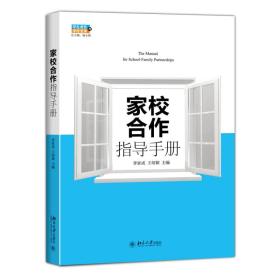
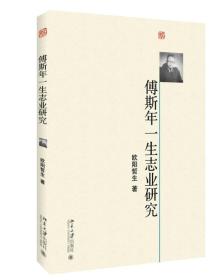

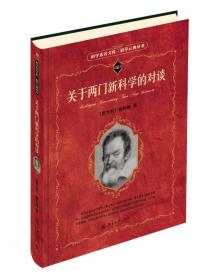

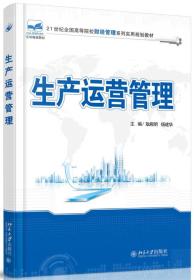
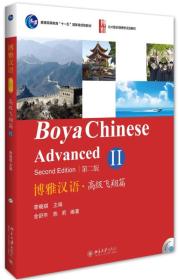


以下为对购买帮助不大的评价